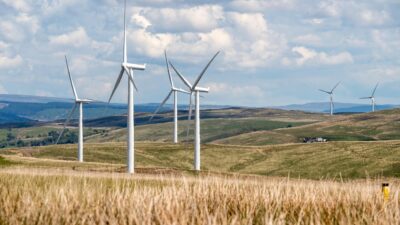As the world grapples with the urgent challenges posed by climate change, resource scarcity, and environmental degradation, the pursuit of sustainable technology has become paramount. Innovations in this field are not just transforming industries; they are creating a framework for a greener future, where ecological balance and economic growth go hand in hand.
What is Sustainable Tech?
Sustainable technology encompasses a broad range of innovations designed to reduce environmental impact, optimize resource use, and promote renewable solutions. This can include everything from energy-efficient appliances and sustainable agricultural methods to advanced materials like bioplastics and innovative water treatment systems. The ultimate goal is to create systems that support environmental health while fulfilling human needs.
Key Innovations Driving Change
1. Renewable Energy Sources
The shift towards renewable energy is perhaps the most significant aspect of sustainable technology. Solar, wind, geothermal, and hydroelectric power are rapidly gaining ground as viable alternatives to fossil fuels. Innovations such as solar panels that can be integrated into building materials and improved wind turbine designs that capture more energy are making renewable sources more accessible and efficient.
2. Energy Storage Solutions
One of the challenges of renewable energy is storage. Breakthroughs in battery technology, particularly lithium-sulfur and solid-state batteries, are paving the way for more reliable energy storage. These advancements can help stabilize power grids, making renewable energy sources practical for widespread use.
3. Smart Grids and IoT
The integration of the Internet of Things (IoT) in energy management through smart grids allows for real-time monitoring and efficiency. Homeowners can manage their energy usage more effectively, while cities can optimize their energy consumption. Smart sensors can reduce energy waste by automatically adjusting lighting and heating systems based on occupancy.
4. Sustainable Agriculture Technologies
Agriculture is a major contributor to greenhouse gas emissions and environmental degradation. Innovations in sustainable agriculture, such as precision farming, vertical farming, and regenerative farming practices, are gaining traction. Technologies like drones and satellite imagery help farmers monitor crop health and manage resources more efficiently, reducing chemical use and conserving water.
5. Biodegradable Materials and Circular Economy
The rise of bioplastics and other biodegradable materials is helping to address the plastic waste crisis. Companies are developing materials that decompose naturally, reducing the burden on landfills and oceans. Additionally, the circular economy model—where products are designed for longevity, repair, and reuse—encourages industries to rethink their practices in creating sustainable products.
6. Carbon Capture and Storage
Innovative technologies for carbon capture and storage (CCS) are essential for reducing greenhouse gas emissions. These systems can capture CO2 emissions from power plants and industrial sources, preventing them from entering the atmosphere. Advances in CCS technology are making it more efficient and cost-effective, contributing to a decrease in overall emissions.
7. Eco-friendly Transportation Solutions
The transportation sector is one of the largest contributors to carbon emissions. Electric vehicles (EVs), along with advancements in public transportation systems like electric buses and trains, are crucial for sustainable urban mobility. Moreover, improvements in charging infrastructure and battery range are making EVs more practical for everyday use.
Challenges and Future Directions
While sustainable tech offers promising solutions, several challenges remain. The initial costs of many green technologies can be a barrier for businesses and consumers alike. Moreover, the rapid pace of technological change requires continuous investment in skills and education to ensure that the workforce can adapt.
Additionally, achieving a truly sustainable future requires collaborative efforts among governments, businesses, and consumers. Policies that encourage investment in sustainable technologies, incentives for green practices, and public awareness campaigns are crucial for driving change.
Conclusion
Sustainable technology is at the forefront of the fight against climate change and environmental degradation. As innovations continue to unfold, they will transform not only how we produce and consume energy but also how we interact with the world around us. By embracing and investing in sustainable tech, we can foster a planet that supports future generations, ensuring a harmonious balance between ecological needs and economic growth. The journey towards a greener future is not only possible—it’s imperative.



